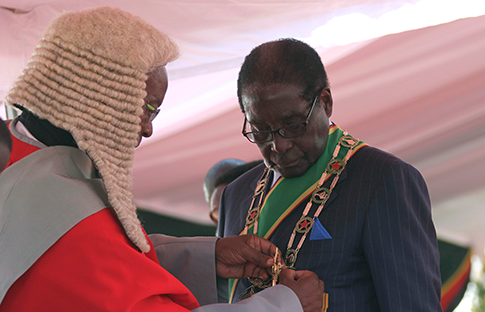
The volcanic state of relations today between President Robert Mugabe and the West completely hides the fact that the Zimbabwean leader once enjoyed excellent relations with the West. After independence in 1980, Mugabe showed complete willingness to forget about the grievances of the past (though the wounds of the liberation war were still very fresh), to embark on the path of reconciliation. It was at the Lancaster Conference of 1979 that Mugabe sat face to face with his enemies to discuss the future of the new nation of Zimbabwe which saw the light of day only hours later.
The resultant Lancaster Constitution provided safeguards for everything including the land which was the major bone of contention. The “willing seller, willing buyer” clause of this constitution gave some assurances to both sides. For ten years after independence Zimbabwe remained a showcase of prosperity in Africa and Mugabe won the confidence and admiration of the West especially as he made significant moves towards reconciliation.
Because of the deep-rooted enmity that characterised relations between whites and blacks in post independent Zimbabwe, Mugabe made it a priority to assure whites in his country that the days of conflict were over. In a move that shocked his greatest sceptics, he appointed General Peter Walls as head of Zimbabwe’s new army. This same Walls had been responsible for of most of the atrocities that claimed the lives of African guerrillas and civilians during the liberation struggle.
Mugabe entrusted Walls with the responsibility of integrating former white soldiers into the Zimbabwean army alongside ZIPRA and ZANLA forces to form the new Zimbabwe defence Forces (ZDF). This move which was resented even by Mugabe’s own veterans showed how far he could go in reaching out to the white population of Zimbabwe. Even Mugabe’s new Government of National Unity included whites. It was another reason to win the attention of the West.


